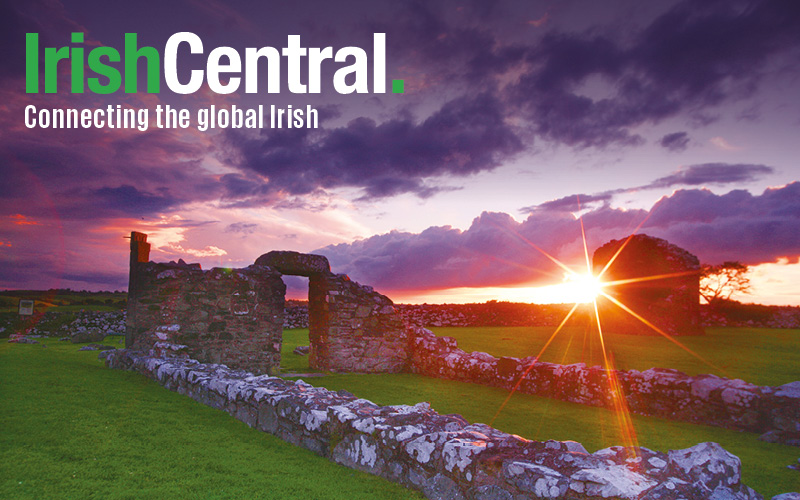For the first time, all those who died in the Easter Rising of 1916, including rebels, civilians and members of the British forces, are being remembered by name on a wall similar to the Vietnam veterans' memorial in Washington D.C.
A group of 100 protesters from militant Republican groups showed up carrying banners and trying to create a disturbance.
Many of those present carried banners and placards bearing the logo of the 32 County Sovereignty Movement. One of the banners read: “British soldiers with our patriot dead? Not in my name.”
In a statement issued prior to the ceremony, Aengus Ó Snodaigh TD, who chairs Sinn Féin's 1916 centenary committee, said his party was opposed to listing the names of Irish republicans alongside British soldiers.
"Sinn Féin did not agree to this proposal as we believe it is totally inappropriate for a memorial wall to list indiscriminately together Irish freedom-fighters and members of the British crown forces," he said.
The Remembrance Wall, which was unveiled at Dublin's historic Glasnevin Cemetery today, displays in alphabetical order the names of 488 people and the dates on which they died.
Most of those listed are civilians, who make up 55 percent of the total, with 29 percent from the police or the British Army and 16 percent from the ranks of the insurgents, including executed leaders such as Patrick Pearse and James Connolly.
In a keynote address, Mr John Green, chairman of the Glasnevin Trust which manages the cemetery, said 224 of the 488 people killed were buried there.
Gravediggers worked tirelessly over a 12-day period at the time and he pointed out that Gerald Neilan, one of the first British soldiers to be killed, was buried in the same grave as his younger brother Arthur, who died fighting on the other side.
"Behind each and every one of these lost lives lies a story of heartbreak, no matter what side the person served on or indeed for those innocently caught up in the conflict.
"One hundred years on, we believe this memorial reflects the time we live in, with the overwhelming majority of the Irish people wishing to live in peace and in reconciliation, but it is for each visitor to take from the wall what they wish."
The monument, which is also known as the Necrology Wall, is scheduled later to include names of those who died in the War of Independence of 1919-21 and the Civil War of 1922-3.
The ceremony was to be headed by Acting Taoiseach (prime minister) Enda Kenny and Sinn Féin Lord Mayor of Dublin, Críona Ní Dhálaigh.
Mr Kenny laid a wreath but the Lord Mayor did not attend and was represented instead by Ruairí McGinley, an Independent member of Dublin City Council, who said her absence was due to unforeseen family circumstances.
The Irish Defence Forces were prominent in the commemoration and leading religious and humanist figures paid their respects to the dead of Easter Week and its aftermath.
The Northern Ireland power-sharing Executive was represented by Justice Minister David Ford. British Ambassador Dominick Chilcott, US Ambassador Kevin O'Malley and Papal Nuncio, Archbishop Charles Brown, were also in attendance.
Others present included Minister for Arts, Heritage and the Gaeltacht Heather Humphreys, Transport Minister Paschal Donohoe and former Taoisigh Bertie Ahern and John Bruton.
There were scuffles outside the cemetery between protesters and members of the Garda Síochána, the Irish police force. Attempts were made to set fire to the Union Jack, but as a result of the wet weather the British flag was too damp to catch fire.
A firecracker which went off during the protest caused some concern among the attendance at the ceremony inside the cemetery as it sounded like a gunshot.




Comments